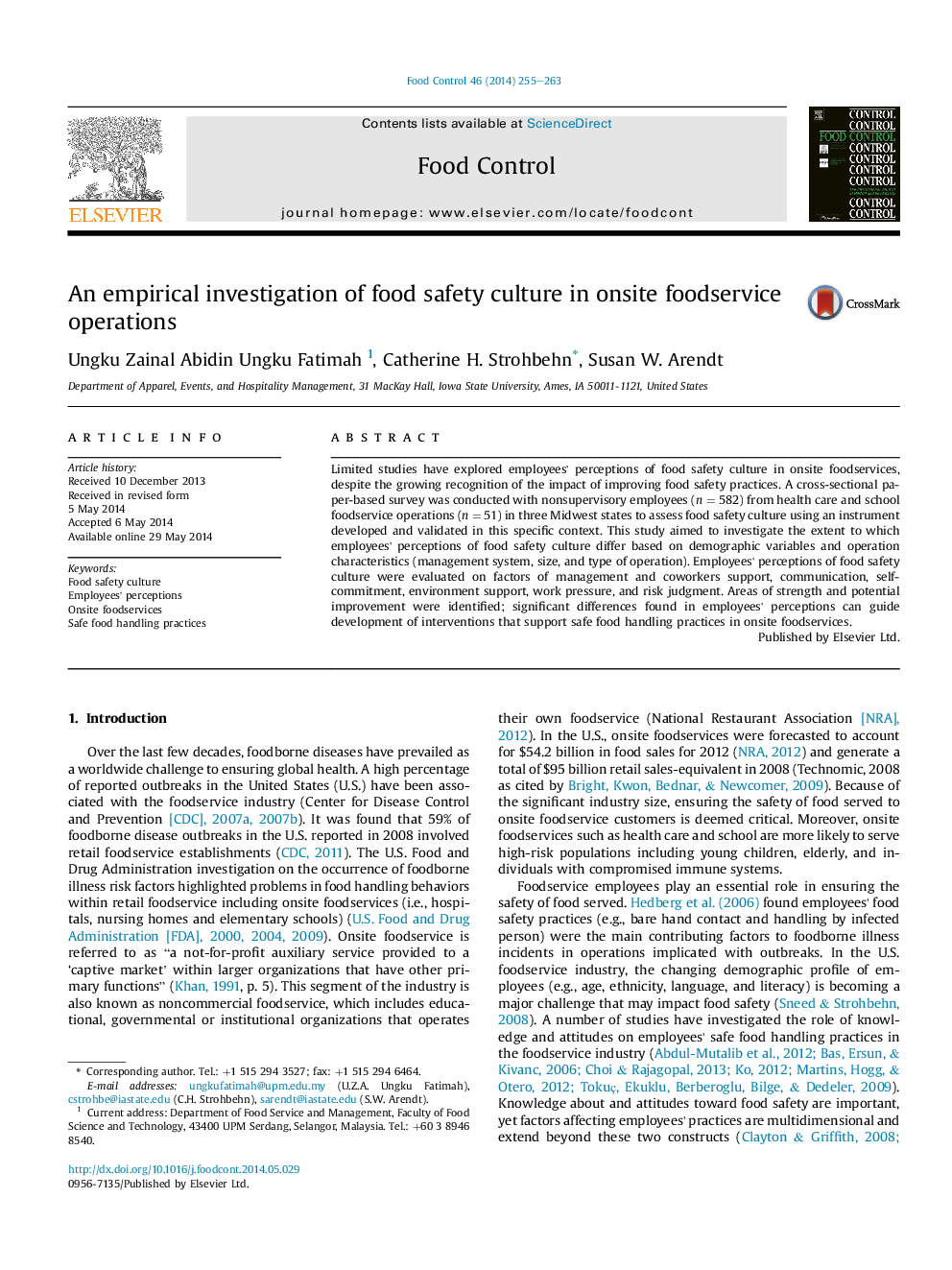| Article ID | Journal | Published Year | Pages | File Type |
|---|---|---|---|---|
| 6391217 | Food Control | 2014 | 9 Pages |
â¢Empirically investigated food safety culture in onsite foodservices.â¢Responses to 47 items categorized into six factors by principle component analysis.â¢Factors self-commitment (M = 6.54) and environment support (M = 6.31) highest rated.â¢Risk judgment (M = 5.51) and management/coworkers support (M = 5.62) lowest.â¢Respondents' perceptions of food safety culture differed by demographics.
Limited studies have explored employees' perceptions of food safety culture in onsite foodservices, despite the growing recognition of the impact of improving food safety practices. A cross-sectional paper-based survey was conducted with nonsupervisory employees (n = 582) from health care and school foodservice operations (n = 51) in three Midwest states to assess food safety culture using an instrument developed and validated in this specific context. This study aimed to investigate the extent to which employees' perceptions of food safety culture differ based on demographic variables and operation characteristics (management system, size, and type of operation). Employees' perceptions of food safety culture were evaluated on factors of management and coworkers support, communication, self-commitment, environment support, work pressure, and risk judgment. Areas of strength and potential improvement were identified; significant differences found in employees' perceptions can guide development of interventions that support safe food handling practices in onsite foodservices.
